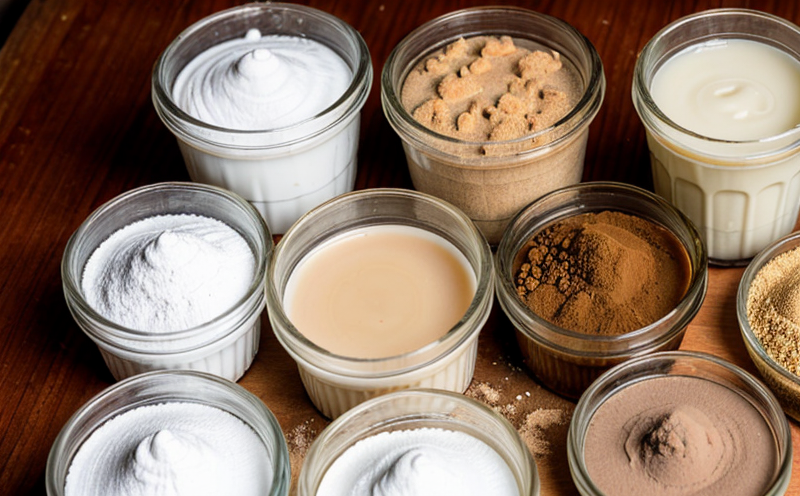Codex CAC/RCP 47 Guidelines for Mold Control in Animal Feed
The Codex Alimentarius Commission (CAC) RCP 47 guidelines provide a comprehensive framework to assist governments and the food industry in ensuring that animal feeds are safe from mycotoxins, molds, and other contaminants. These guidelines emphasize the importance of mold control measures to protect both animals and human consumers who may eventually consume meat or dairy products derived from these animals.
Given the critical role of feed safety in maintaining animal health and productivity, this set of guidelines outlines key steps for manufacturers to follow in order to comply with international standards. The CAC RCP 47 is designed to be applied throughout the supply chain—from raw material procurement through processing and storage—to minimize exposure to molds.
The document covers various aspects including:
- Identification of key risk areas
- Sampling procedures
- Testing methodologies for mold identification and quantification
- Control measures during production, transport, and storage
- Labeling requirements to inform consumers about the presence or absence of molds in feeds
The guidelines are particularly relevant for industries dealing with raw materials like grains, oilseeds, and other plant-based products used as feed ingredients. By adhering to these standards, companies can ensure that their products meet global quality expectations and regulatory requirements.
For instance, in the case of corn, one of the most commonly used feed ingredients globally, molds such as Tolypocladium inflatum, Aspergillus versicolor, and Fusarium verticillioides can contaminate kernels during harvest or storage. These molds not only reduce feed quality but also produce mycotoxins like zearalenone, fumonisin B1, and aflatoxin B1, which are harmful to both livestock and humans.
The CAC RCP 47 aims to mitigate these risks by recommending best practices such as:
- Implementing good agricultural and harvesting practices
- Using appropriate drying techniques after harvest
- Minimizing post-harvest handling that might increase mold growth
- Regularly monitoring feed quality through microbiological analyses
- Establishing clear limits for acceptable levels of molds in raw materials before processing into finished feeds
Incorporating these measures can help producers maintain consistent product quality while also enhancing overall animal health and welfare. This not only supports sustainable farming practices but also contributes to food safety.
The implementation of CAC RCP 47 goes beyond just protecting livestock; it ensures that the final products derived from these animals, such as meat and dairy, are safe for human consumption. This aligns with broader goals related to public health, environmental sustainability, and responsible resource use within agricultural sectors.
Applied Standards
The Codex Alimentarius Commission's RCP 47 guidelines are consistent with several international standards, including:
- ISO/TS 19586-3:2016 – Provides guidance on the use of mold inhibitors in feed ingredients.
- ASTM E1228-14 – Describes procedures for determining viable fungi and yeasts in feeds using direct microscopy methods.
- EN 17309:2015 – Specifies requirements for the production of aflatoxin-free maize grain suitable for animal feed.
- IEC 62444-3:2018 – Offers recommendations on how to monitor and control mold growth in stored grains intended for animal feed.
By aligning with these standards, laboratories can offer reliable testing services that meet both regional and international criteria. This ensures consistent accuracy across different markets and supports the global trade of safe and high-quality animal feeds.
Additionally, compliance with CAC RCP 47 helps firms stay ahead of regulatory changes and emerging trends in feed safety. As new species of molds are discovered or known molds develop resistance to current control measures, staying up-to-date with these guidelines ensures long-term success in the industry.
Environmental and Sustainability Contributions
The Codex Alimentarius Commission's efforts through RCP 47 align closely with broader sustainability goals. By promoting safe and healthy animal feeds, this initiative supports sustainable agricultural practices that contribute to:
- Biodiversity conservation: Ensuring that feed production does not lead to environmental degradation.
- Economic stability: Reducing losses due to mold contamination and ensuring continuous supply of nutritious food for animals.
- Community health: Minimizing the risk of mycotoxin exposure in humans through safe animal products.
Mold control is not just about protecting individual operations; it plays a crucial role in maintaining overall ecosystem balance. For example, reducing mold levels can prevent fungal diseases that might otherwise spread to other crops or even wild flora and fauna nearby. Moreover, by adhering to these guidelines, companies contribute positively towards achieving the United Nations Sustainable Development Goals (SDGs), particularly SDG 2 ("End hunger, achieve food security and improved nutrition and promote sustainable agriculture").
Through rigorous testing aligned with CAC RCP 47 standards, laboratories play an integral part in this journey by providing accurate data that informs better decision-making at every stage of feed production. This enables stakeholders to implement effective prevention strategies tailored specifically for their operations.





